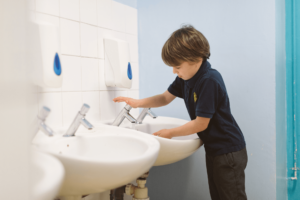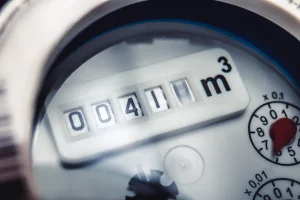Many farmers cannot rely on rainfall alone to adequately water their crops. This could be because they grow in drier climates, experience unpredictable rainfall patterns, or want to increase how much they produce over the year.
Table of Contents
What is an irrigation system?
An irrigation system is a structured method of delivering water to crops through artificial means, ensuring that plants receive adequate moisture even when natural rainfall is insufficient. Farmers use irrigation systems to make up for unreliable rainfall, optimise crop yields, and improve produce quality. By supplementing rainfall with controlled watering, they can successfully grow crops in drier climates, stabilise yields during unpredictable weather, and even extend growing seasons.
Why do farmers use irrigation systems?
For many farmers, relying solely on rainfall is not feasible. Factors such as climate, soil type, and crop requirements mean that water needs vary greatly. An effective irrigation system allows farmers to apply precise amounts of water where and when it’s needed, reducing water waste and enhancing growth. This can make a substantial difference in productivity and water-use efficiency.
Some farmers turn to irrigation as an additional way to provide their crops with water. For farmers who do so, there are a variety of systems to choose from, each with its own advantages and disadvantages.
Types of irrigation systems
Once farmers decide that they need an irrigation system, they have several options to choose from, including centre-pivot, traveling gun, linear, drip, subsurface, flood and furrow, and gravity irrigation. Each system has unique characteristics suited to different types of land, crops, and climates. Choosing the right irrigation system can maximise crop yields, save water, and reduce operational costs.
The reasons why farmers use one system over another are varied and sometimes complex, and the type of system can greatly impact crop yields as well as the water footprint of a particular crop.
Centre-pivot irrigation
Centre-pivot irrigation uses an automated sprinkler system with a rotating sprinkler pipe, usually supplied from a well in the centre of a circular field. Farms that use this type of irrigation can be easily identified by the green, circular fields that result. The pipe is powered along a circular path on wheels, and water is sprayed onto plants at a uniform rate. Because the water is sprayed into the air, it is subject to evaporation from wind and low humidity environments. The amount of water applied depends on how fast the watering arm moves around the circle. A single centre-pivot system normally irrigates about 130 acres.
Travelling gun irrigation
This system uses a single large rotating nozzle to disperse water over an area, similar to sprinkler heads used in a domestic garden. These much bigger nozzles, or guns, typically discharge between 100 and 2000 litres per minute and will irrigate to a radius of 25 to 75 metres. These systems use more energy than centre-pivot systems because of the pressure required to shoot the water out. They are also more labour-intensive, and, like other spray systems, they lose water to evaporation.
Linear irrigation systems
Linear irrigation systems are similar to centre-pivot systems but rather than rotating around a fixed point, the systems move laterally across rectangular fields. Most systems are supplied with water from a ditch that runs the length of the field or from a large hose that is dragged along through the field. These are best suited to level fields without slopes. Because these systems have internal guidance systems to keep them moving in a straight line, they require regular maintenance.
Drip irrigation
Drip irrigation is a highly water-efficient system that applies water directly to plant roots through applicators that operate under low pressure, either on or below the surface of the ground. The system delivers water either directly to the plant roots or along planting rows and requires clean, ‘soft’ water so the nozzles don’t get clogged. Even so, the nozzles require regular maintenance to prevent clogging from algae growth or mineral build-up. The amount of water can be tailored to the needs of individual crops, and the system works well on sloping or oddly shaped fields.
Subsurface irrigation
In subsurface irrigation, water is applied below the ground surface either by raising the water table within or near the root zone or by using a buried perforated pipe that brings water directly into the root zone. This type of irrigation can be very efficient at delivering water directly where it’s needed.
Flood and furrow irrigation
Flood irrigation involves pumping water into fields that are flooded to a certain depth so the entire soil surface is covered by water. This system is one of the oldest and is often used in rice paddies around the world. Flood irrigation is inexpensive to install, has low energy costs, and is less affected by water quality. However, flood irrigation is much less water-efficient than other systems and can waste a lot of water if the fields are sloped. Furrow irrigation is similar to field flooding, where water is applied in furrows or rows alongside the crops.
Gravity irrigation
Gravity irrigation channels water through canals or pipes from higher to lower areas. It doesn’t require water pumps and is a good way to distribute water to smaller fields. This is a cheaper form of irrigation, but it tends to be inefficient, and the pipes or canals require regular maintenance.
Each farmer must consider a wide range of factors before choosing the irrigation system that is right for their unique circumstances. Different irrigation systems bring their own benefits and drawbacks, but identifying the right system can lead to higher yields, improved produce quality, and improved water efficiency.
Farmers in England
In England, where rainfall varies greatly across regions, many farmers benefit from irrigation systems that can adapt to these fluctuating weather patterns. For example, in the drier southeast of England, farmers might find drip irrigation especially advantageous because it delivers water directly to the plant roots, minimising evaporation losses in areas with lower humidity. For larger fields, centre-pivot irrigation can also be effective, as it covers extensive areas with uniform water distribution, which is ideal for crops like wheat, barley, and corn. With water resources increasingly under pressure in parts of England, systems that enhance water-use efficiency are critical. By investing in efficient irrigation, farmers can improve crop yields, minimise waste, and help ensure long-term sustainability.
Farmers in Scotland
In Scotland, where rainfall is generally higher but can still be inconsistent, farmers often prioritise irrigation systems that perform well in cooler, wetter conditions and on varied terrain. Subsurface irrigation is particularly beneficial in Scotland, as it delivers water directly to the root zone, reducing surface evaporation and making it a highly efficient choice for fields with sloping or uneven landscapes. For Scottish farmers, partnering with organisations like Castle Water, which works closely with NFU Scotland, provides valuable support. Through this partnership, NFU Scotland members can access substantial discounts on water services and irrigation equipment, helping them to manage water costs effectively while enhancing crop production. This collaboration allows Scottish farmers to make the most of their resources and achieve better water efficiency tailored to their local conditions.



